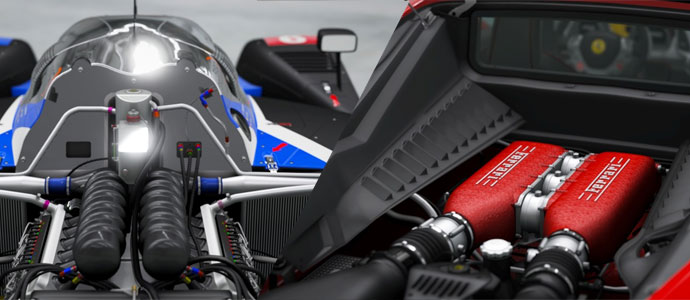Donpost's Tuning Guide for Forza Motorsport
July 16, 2013

Under the bonnet
Donpost's Tuning Guide for Forza Motorsport
Please note that this is donpost's way to tune cars. It is not the only/best way of tuning in Forza and is intended as a guide to help those who wish to learn how to tune. All of what is written here works with FM5 too as it has the same telemetry system - however as donpost hasn't had a chance to get his hands on the new physics engine it is possible some things are now more or less important than they were in FM4.
This tuning guide uses the Renalt Clio from the Clio Cup as an example. If you wish to follow along with the guide in this car to get a feel for tuning click here for the build.
Initial setup
Tyres – 32 front and back
Gears - leave alone
Camber – 0.0 front and back
Toe – 0.0 front and back
Caster – 7.0
Anti-roll bars – 20/20
Springs – leave alone
Ride height - minimum front and rear
Dampers – 6/6/3/3
Aero – If you have any downforce adjustable parts
on the car take them off before starting to tune. I'll let you know
when to add them back on!
Diff – 25/25
Brakes – 50 for balance. Brake force is personal
preference.
Suspension – Springs
Springs have three functions. They smooth out the tyre’s passage over bumps in the road, they stop the car from rolling and pitching about under braking/cornering/acceleration, and they must be stiff enough not to make the car feel sloppy or even worse run out of travel and hit the bump stops. Body roll will be dealt with by the anti-roll bars. Pitching isn’t normally an issue. So that just leaves the two things to worry about; making them stiff enough to give your car good response and body control, and soft enough to absorb bumps. Like most tuning options it’s a compromise.
It’s best to think of springs in Forza in terms of frequency rather than stiffness. Spring frequency is a function of spring stiffness and the weight they have to support – the car. Two different cars with the same spring frequencies will have the same trade off of response vs. bump absorption.
As a rule, I keep the ratio of front to rear stiffness the same as the car’s weight distribution. The only reason to deviate from this would be to tune the balance of the car, but the roll bars do exactly the same job and better so we’ll be using them instead.
So that just leaves the overall spring stiffness. I’ve attached a spreadsheet that will help you determine the correct spring rates to use. Fill in the green cells with information about your car. In the yellow cell you need to choose a spring frequency. Higher = stiffer, lower = softer. 2.5Hz is a good place to start.



Comments
Mr Blonde V
93 AdminI can't thank you enough Don for this amazing contribution. Just incredible!
Fourzatwenty
0so when the distribution is say 54%, that means 4% more towards the front im assuming when it comes to matching the stiffness?